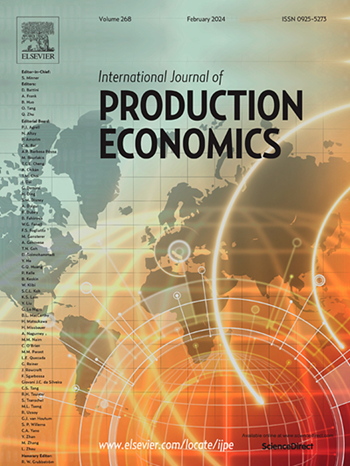Coordination in agri-food supply chains: The role of Geographical Indication certification
IF 9.8
1区 工程技术
Q1 ENGINEERING, INDUSTRIAL
引用次数: 0
Abstract
We examine the role of Geographical Indication (GI) certification in coordinating small- and medium-sized food suppliers and large-scale retailers in agri-food supply chains, where retailers seek to procure high-quality goods. Our main contributions are twofold. First, using a principal–agent framework with asymmetric information about supplier efficiency in quality production, we develop a signalling model that illustrates how GI certification enhances the coordination effect of procurement contracts by improving the ability of the retailer to identify efficient suppliers and increasing the provision of high-quality goods. The model also yields predictions about the impact of a supplier’s GI certification status and size on the retailer’s expected profits. Second, using a novel dataset from a survey of 476 small- and medium-sized food craft suppliers in Germany, we provide evidence supporting the theoretical model’s predictions regarding the effects of GI certification and supplier size on the retailer’s expected profits. Specifically, we estimate a structural equation model (SEM) that matches the equilibrium equations describing retailer and supplier behaviour in the theoretical model and links the probability of a transaction to a supplier’s GI certification and size. Our findings from instrumental variable (IV) approaches and propensity score matching (PSM) indicate that GI-certified suppliers are 19.9% to 42% more likely to transact with a retailer than non-certified suppliers, and medium-sized suppliers are 11.7% to 26.3% more likely to transact with a retailer than micro- or small-sized suppliers. These results suggest a potential role for GI certification in supplier-retailer coordination.
求助全文
约1分钟内获得全文
求助全文
来源期刊
CiteScore
21.40
自引率
7.50%
发文量
266
审稿时长
52 days
期刊介绍:
The International Journal of Production Economics focuses on the interface between engineering and management. It covers all aspects of manufacturing and process industries, as well as production in general. The journal is interdisciplinary, considering activities throughout the product life cycle and material flow cycle. It aims to disseminate knowledge for improving industrial practice and strengthening the theoretical base for decision making. The journal serves as a forum for exchanging ideas and presenting new developments in theory and application, combining academic standards with practical value for industrial applications.

 求助内容:
求助内容: 应助结果提醒方式:
应助结果提醒方式:


